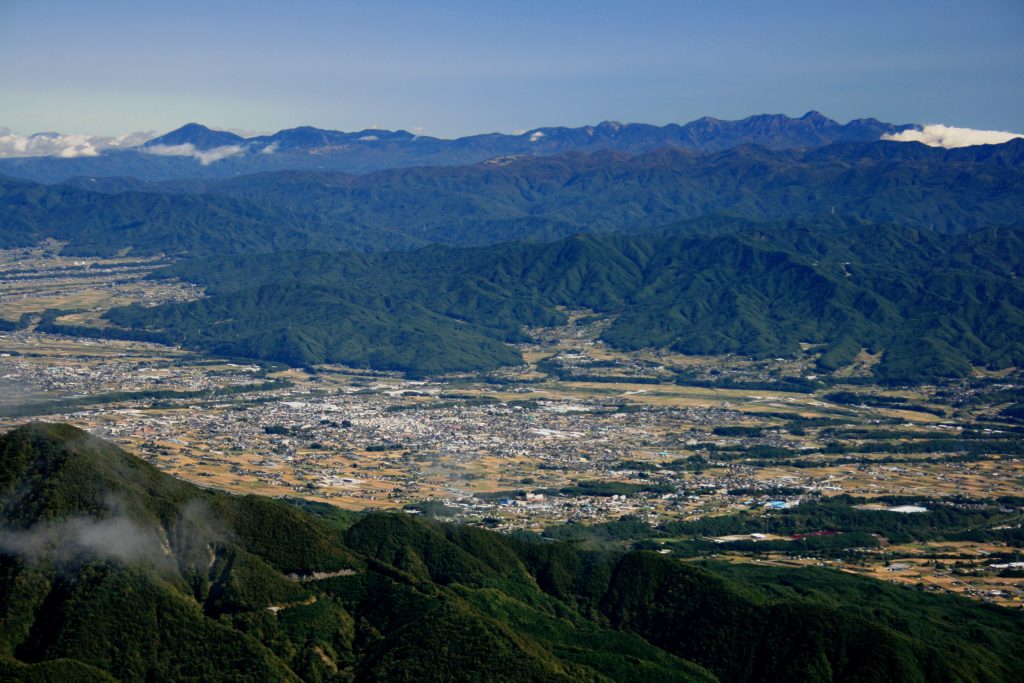
By Alpsdake – Own work, CC BY-SA 3.0, https://commons.wikimedia.org/w/index.php?curid=20577361
Nagano Prefecture was the first prefecture in Japan to declare a climate emergency in the year 2022 and has resolved to achieve virtually zero CO2 emissions in 2050 (2050 Zero Carbon).
In June 2021, Nagano Prefecture formulated the “Nagano Prefecture Zero Carbon Strategy”, an action plan for the next 10 years (FY2021-2030) towards the target of zero carbon emissions by 2050. In November 2023, the “Nagano Prefecture Zero Carbon Strategy Road Map” was formulated to achieve the FY2030 target. The prefectural government is determined to steadily promote the measure by engaging with local citizens and businesses.
The prefecture’s target for greenhouse gas emissions by 2030 is a further 60% reduction of 2010 levels. The additional 60% reduction from 2010 emission levels is more ambitious than the national target, which aims for a 46% reduction from 2013 emission levels. To successfully meet this great challenge, the prefecture has set reduction targets for each of the following sectors: transport, households, industry and business.
A major focus in the initiatives in the household sector, which is responsible for the second highest amount of greenhouse gas emissions.
In the residential sector, emissions are to be reduced through the three pillars of ‘energy-saving housing’, ‘diffusion of energy-saving appliances’ and ‘use of renewable energy electricity’. In the area of energy-saving housing, the government subsidises a portion of the cost of new Shinshu Healthy Zero-Energy Houses (Shinshu is an area within the region synonymous with ‘Old Nagano’) to promote Zero Emissions Housing concepts in new housing. Designated Shinshu Healthy Zero-Energy Houses are wooden dwellings with high insulation performance that aim to achieve virtually zero energy use while making use of Shinshu’s rich natural environment and forest resources, and the subsidy requirements include standards to reduce environmental impact.
Additionally, by making the use of a certain amount of locally-grown timber a requirement for subsidies, the project also contributes to CO₂ absorption through forest rejuvenation within the prefecture and the reduction of CO₂ emissions of transporting imported timber. In addition, studies are currently underway to develop an ordinance to strengthen the mandatory compliance standards for new homes (ZEH standards).
Renewable electricity is an example of how the ‘Shinshu Roof Solar’ standard is being developed. In addition to the existing subsidy schemes, joint purchases and awareness-raising through potential maps which allows the potential of solar power generation use to be viewed for each building, the prefecture is also considering the introduction of a solar panel installation method with no initial costs, with the aim of making rooftop solar ‘standardised ‘. The Shinshu Roof Solar ‘Standardisation’ Project with the slogan ‘solar on every roof’, aims to increase the cumulative number of residential roof solar installations from 90,000 in FY2021 to 220,000 in FY2030.
In other sectors, such as the transport sector, the measures will be steadily promoted together with many people, including prefectural residents and businesses, while widely sharing the current situation of the climate crisis and the Nagano Prefecture Zero Carbon Strategy Roadmap.
(See also.)
■Roadmap for the Zero Carbon Strategy of Nagano Prefecture – Realising a Zero Carbon Society through Individual Action – November 2023 (November 2023) (roadmap202311.pdf (nagano.lg.jp))
https://www.pref.nagano.lg.jp/kankyo/keikaku/zerocarbon/documents/roadmap202311.pdf
■Shinshu Health Zero Energy House Subsidy (nagan_zeroene24_Pamph_A4_house_ol)
https://www.pref.nagano.lg.jp/kenchiku/kenkozeroene/documents/house.pdf
■Shinshu Roof Solar Promotion Project (Shinshu no Roof Solar Promotion Project / Nagano Prefecture (nagano.lg.jp)).
https://www.pref.nagano.lg.jp/kenchiku/kenkozeroene/documents/house.pdf

